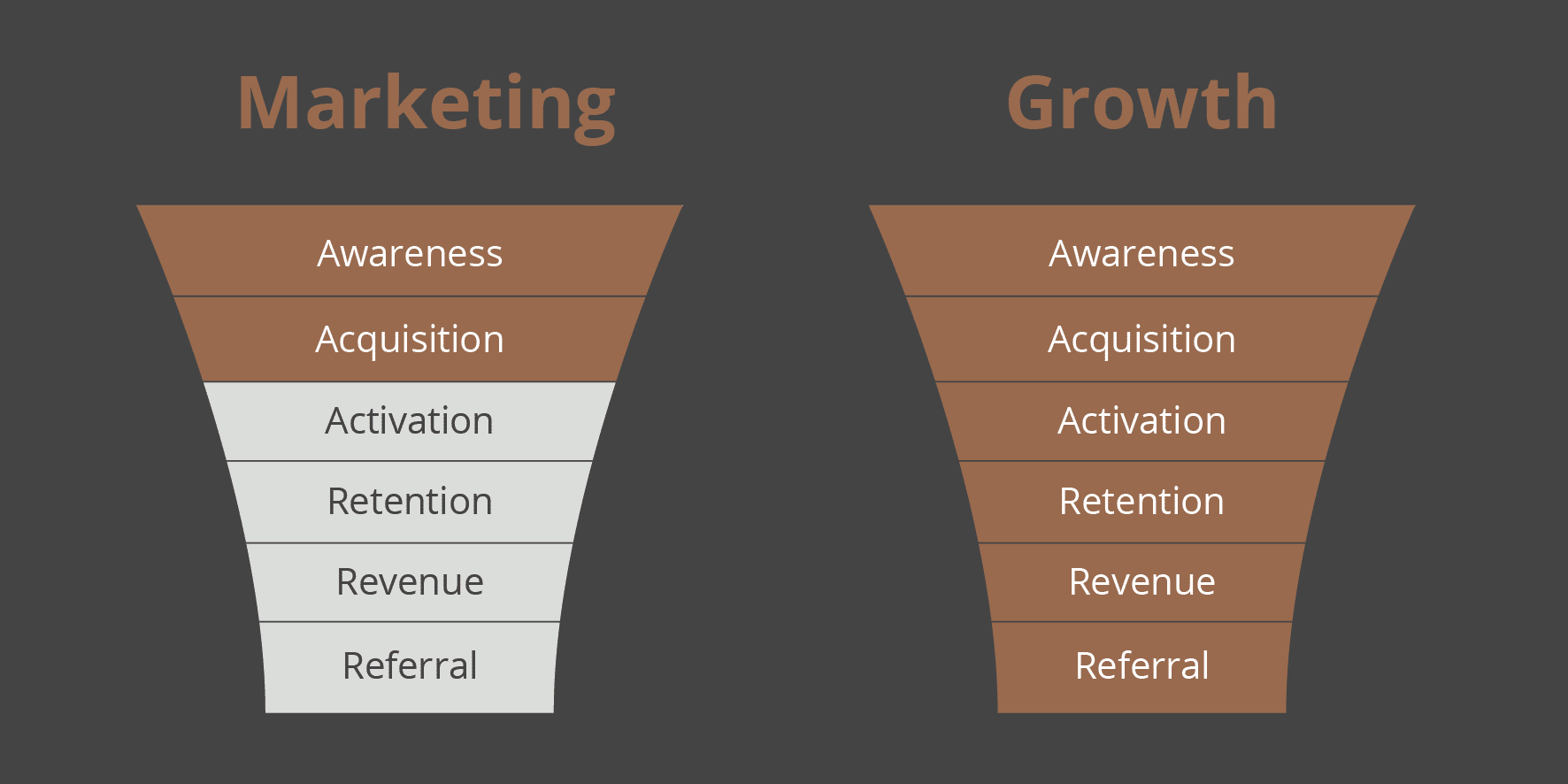When you hear the word ‘growth’ uttered in marketing circles, you automatically think of growth hacking, a term that seems to invoke negativity. It implies a shortcut, or cheating your way to growth through manipulating streams of code. Very shady.
But growth marketing is anything but this. It focuses on the every step in the classic sales funnel, (the buying process that companies lead customers through when purchasing products) rather than just the top of the funnel. It focuses on the product or service, scalability and the marketing.
The objectives that traditional marketers pursue align with awareness and acquisition – the first two layers of the funnel – with KPIs generally surrounding the number of downloads, leads, blog registrations etc. This leaves the rest of the funnel to operate in silo, causing a disconnect in what will translate into growth.
This scenario could look a little bit like this:
The sales team have a revenue target to reach, but marketing aren’t collaborating with the product department to ensure the offering coincides with consumer demand.
Basically everybody has a different idea as to what constitutes growth. Not great for a sustainable business plan.
True Growth Marketing
Growth marketing teams visualise the funnel totally differently, taking a more holistic view. They see each and every layer as a route to growth, not just the first two.
Let’s refresh our memory of the funnel.
Although growth teams place equal importance on each layer of the funnel, the biggest key difference is that of retention. An integral element in any growth strategy, retention is what eliminates the detrimental consequence of churn.
Take this for example:
“If a typical SaaS business loses about 2 to 3% of their customers each month to churn, the business must grow by at least 27% to 43% annually to maintain the same revenue.”
– Tomasz Tunguz
The middle and bottom of the funnel – activation, retention, revenue and referral – rely on product innovation, utilising a new platform or paid acquisition to accelerate growth, proving why the integration of your entire business is so important. How you go about making those important business decisions needs to be based on insight, not guesswork. From how customers use your product or service to the times of day they interact with your brand, access to data is now literally at our fingertips, and it’s fundamental to take advantage of this to seek new market opportunities or to gain visibility over your operational weaknesses.
Once you’ve got the data and interpreted it, the outcome will be determined by your response – do you innovate your product now, or wait? Do you invest in a new social media platform or just alter the way you use your current ones? Just make sure to monitor the impact of these decisions upon your business and customer base.
Growth Goals
As we’ve indicated, growth teams seek to influence each layer of the funnel, meaning their objectives differ from that of traditional marketers. Their goal is the growth rate, not individual components of the marketing strategy such as visits to the website or lead generation. Whilst these are still core factors in the growth machine, growth marketing teams focus on the rate of a metric that gives a bigger picture.
I.e. Monthly active subscribers > instead of number of blog sign ups.
What’s needed is a change in mentality about how we construe our marketing. Think fully integrated, data-led and growth orientated.
Want to build your own infrastructure that supports a growth marketing methodology?
Download The Advanced Growth Framework to see how to:
• Discover your present state of scope for improvement
• Devise and deliver a strategy that executes on the KPIs
• Continuously improve
{{cta(‘9c6788fc-68d6-4915-85ea-1ca6abfc183a’,’justifyleft’)}}
For more about out strategic consultancy service, click here.
